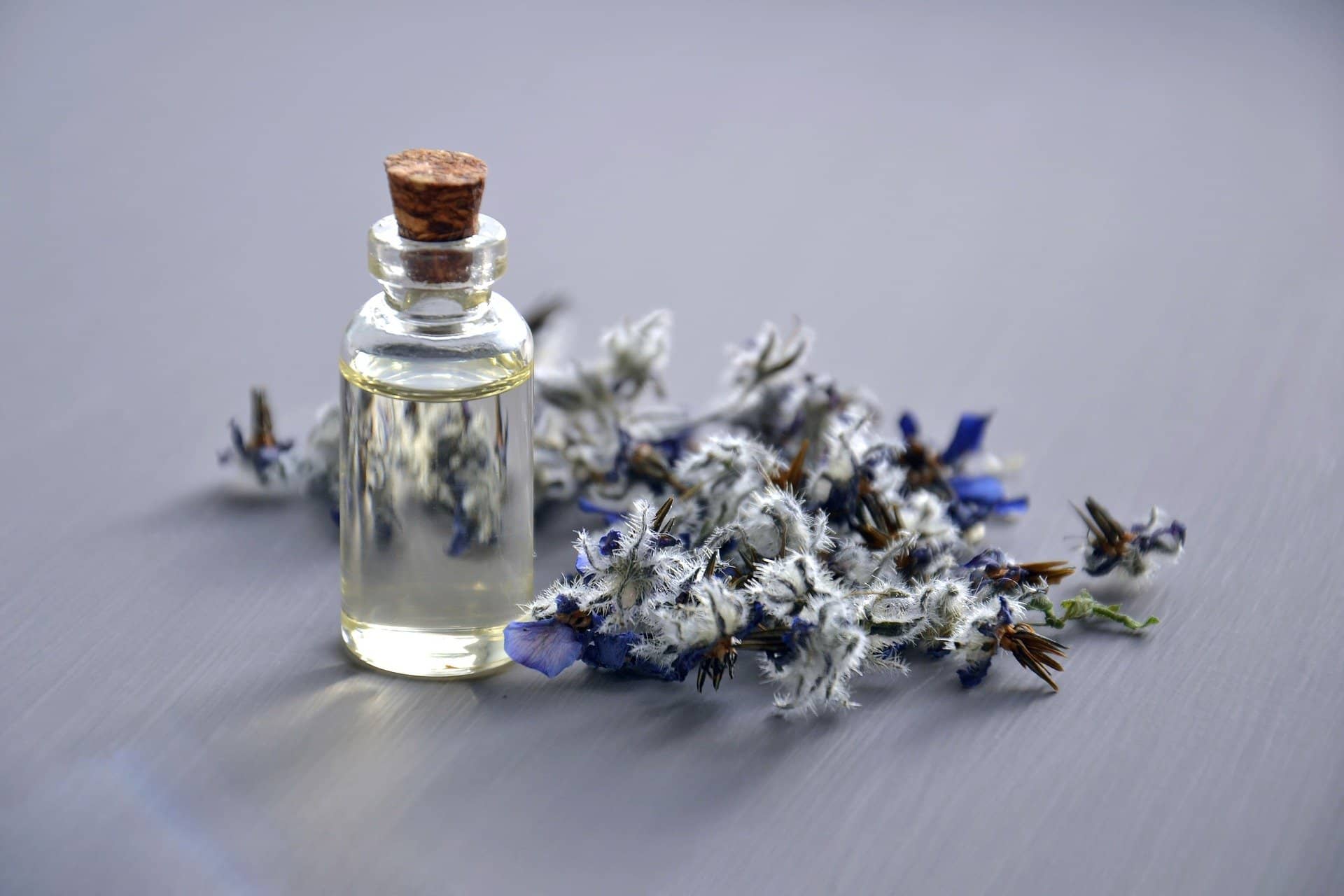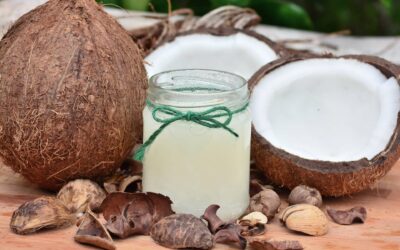Borage scientifically named Borago officinalis is a plant that grows to a height of about 2 feet in height. The plant is also referred to as Bee Plant, Bee Bread, Borago, Starflower, or Borage Flower. Its leaves are large oval and “hairy” with a similar smell to cucumber. The flowers are usually star-shaped and white, blue, or pink in color (1).
The flowers of the borage plant as well as the oil obtained from the seeds are highly medicinal and use to remedy a wide range of diseases and skin disorders (2). The borage plant is of Mediterranean origin and widely cultivated all over Europe and North America.
Borage Oil
For thousands of years, the borage plant was accepted and used as a medicinal and culinary herb. The leaves and flowers were widely used as a salad dressing, making tea, season soups and to flavour wines. In recent years, the borage oil has been trending among health enthusiasts due to its outstanding health benefits and nutritional quality (3).
The Borage oil is pressed or obtained from the seeds of Borago officinalis plant, which explains why the oil is called borage seed oil. The oil is highly rich in an essential fatty acid known as gamma-linolenic acid (GLA), an omega-6 fatty acid needed for a wide variety of body functions (4). The oil is commercially available in capsules and bottled oil in pharmacies and health food shops (5).
It is commonplace to also find borage oil in mixtures with other vegetable oils like flax oil, fish oils, minerals, and vitamins for added advantages and benefits (6). Borage seed oil is known to contain high levels of two types of polyunsaturated omega-6 essential fatty acids. As mentioned earlier, gamma-linolenic acid (GLA) of about 20-26% and linolenic acid (LA) a fatty acid the body used to convert GLA (7).
GLA, is very important in maintaining our joint’s cell structure and functionality. Our body converts GLA into hormone-like substances, which are known as prostaglandins, great at regulating our immune system and to fight joint inflammation (8).
Also, when borage oil is consumed, the gamma-linoleic acid found in the oil is converted to dihomo-gamma-linoleic acid which is similar to the omega-3 fatty acids found in fish oil and flaxseed oil. These fatty acids are great in eliminating inflammation (9).
Production Process of Borage Oil
Borage seed oil can be best obtained through extrusion processes such as cold pressing and hot expelling, organic solvent extraction (mainly hexane). With the cold pressing process, the oil is best extracted by a low-temperature extraction method. The low-temperature extraction is best done through a mechanical pressing process. During the extraction process, the oil temperature is low, the yields are promising and a low residual oil cake is obtained.
The cold-pressed process gives rise to a fine light color quality borage oil rich in nutrients. Due to the use of the press, destruction of the molecular structure of the oil can be avoided, preventing the loss of nutrients and thus an improved quality finished borage oil.
With the Solvent extraction process, the use of a higher temperature is required and the yield can be higher than the cold-pressed method but the quality of the oil is low compared to the cold-pressed method.
Forms of borage oil
Borage oil can come in the form of a bottled oil obtained directly from the plant’s seed (can be used for cosmetic purposes) and also as nutritional supplements in the form of capsules and soft gels which is advisable to be taken by mouth.
Borage oil when taken by mouth in appropriate doses is considered safe, which is why it is very important to read the labels and follow the instructions. When it comes to taking borage internally, it must be in small amounts.
The presence of dangerous chemicals called pyrrolizidine alkaloids (PAs) in borage oil can make the oil not suitable for internal usage, in huge amounts and for a long period of time. The leaf, flower, and seeds of the borage plant may contain PAs. These PAs are known to have negative effects to the liver, or can cause cancer when used in high doses (10).
With this in mind, many borage oil producers for internal usage strive to manufacture PA-free borage oils and in capsule forms. When using borage internally, it is important to stick with products that are certified and labeled as PA-free.
It is recommended that the intake and consumption of PA should not exceed 1 µg per day. When borage oil is refined, it may contain negligible amounts of PA and usually less than 4 µg per kg, which may not pose high health risks in this regard. (11)
Health Benefits of Borage Oil
We strive to connect the world with better alternatives and vegetable oils stand to provide outstanding health benefits. We believe, enlightening the people with the benefits they can get from these products can alter their eating habits and promote a healthy lifestyle. Below are some of the health benefits borage oil can provide.
Rich in Linolenic acid
As mentioned earlier, borage is rich in linolenic acid also known as GLA. GLA is a fatty acid that our body converts to prostaglandin E1 (PGE1), also commonly found in other vegetable oils.
Prostaglandins are known to have healing powers as they can decrease stomach acid production and stimulate the release of mucus that protects the gastrointestinal tract. Prostaglandins may act as a hormone in our body which may help to limit inflammation due to skin diseases and cardiovascular-related issues (12)
One of the reasons people source borage oil is due to this rich content of GLA which is much higher when compared to other vegetable seed oils.
Anti-Inflammatory Characteristics
A recent study was able to demonstrate how borage oil may be used to replace nonsteroidal anti-inflammatory drugs for certain patients. It was discovered that taking 1.8 grams of borage oil per day may help fight against rheumatoid arthritis (13).
Rheumatoid arthritis is considered to be a defective regulation of inflammation with an immune response, causing tenderness, pain, and swelling of the joints (14). With the presence of GLA in borage oil, the production of a potent anti-inflammatory eicosanoid known as PGE1 is possible, this may help to treat rheumatoid arthritis.
Good for Eczema Control
The topical use of borage oil can help with certain skin conditions like atopic dermatitis (15). Borage oil is well known to also have some antioxidant properties and coupled with its GLA, anti-inflammatory properties, the oil may help with atopic eczema (16).
Help Prevent Cardiovascular Disease
Individuals dealing with cardiovascular disease may have less chance of converting LA to GLA and also its metabolites. The consumption of GLA has been able to favorably alter cardiovascular conditions such as blood pressure and blood cholesterol levels. Borage oil with its high source of GLA may be beneficial to cardiovascular patients (17)
Other health benefits of borage oil may include;
– May help reduce cholesterol levels. GLA is well known to reduce harmful LDL cholesterol levels in humans
– Borage oil may reduce blood pressure, Suplementing GLA which is the primary compound in borage oil may help with high blood pressure.
– May help with diabetes. GLA and LA are highly required for a normal neuronal structure and to control microcirculation which is necessary to prevent diabetic neuropathy, a condition with loss of peripheral nerve function.
– Borage oil may help with obesity. Monounsaturated fats and polyunsaturated fats may help alter numerous parameters responsible for body weight.
Market Insights for Borage Oil.
The Borage market value is estimated to almost $43 million USD by 2026. As of 2020, the market value for borage oil was at $35 million with an anticipated cumulative annual growth rate of 3.1%. The major production share of borage oil comes from European and African countries while North America and the Asia Pacific regions account for the major consumption share of borage oil including Europe even though Europe controls a major production share.
The popular demand for borage oil can be attributed to the new and growing application opportunities of the oil in the pharmaceutical, cosmetic, and food industries. In 2018, the pharmaceutical application of borage oil contributed to the largest market share of the oil demand across the globe
For market regions, the Asia Pacific dominated the market in 2018 and accounted for over 30% of global demand, with a cumulative annual growth rate of about 5.6% by 2027. This growth in the region may be attributed to the fast growth of the pharmaceutical and cosmetic industry in Asia.
Also, a variety of cosmetic and pharmaceutical manufacturers have moved their production facilities in developing Asian countries like China, India, and Indonesia which may also contribute to the high demand for borage oil in the region.
With the increasing demand for organic and natural cosmetics products in North America, the borage oil market in North America is expected to grow at a cumulative annual growth rate of 5% between the forecasted periods of 2016 to 2024. As numerous research institutions, continue to uncover the medicinal potential of borage oil, the region is now embracing the consumption of borage oil for food applications such as functional food additives and dietary supplements.
Europe is a major borage producing region. UK is known to cultivate the best quality borage seeds and well known for their high oil and GLA content. The presence of large skincare and haircare manufacturers in Europe is increasing the expectation of high demand for borage oil in Europe. These European manufacturers are shifting their efforts towards bio-based cosmetic development which will eventually increase demand for borage oil.
South Korea stands out as the nation with the highest number of products containing borage as an ingredient. Other countries with the highest number of products containing borage as an ingredient include Germany, Iran, Peru, Spain, and Italy respectively.
Things to consider when importing borage oil
The right thing to do when importing products especially for the first time is to take some time and gather some relevant information regarding the importation of that product into your target market. It is very important to understand what you need and all the necessary paper works to follow in other to import into your market.
When it comes to importing vegetable oils like borage oil and other agricultural products you might want to consider applying for FDA approvals. Some suppliers might be already approved which is a good thing as it won’t be necessary to go through the process again.
Also, a good question you can ask yourself is your knowledge about the borage oil market in your region or area of interest. Knowing your market can help you understand what the market needs and with such information, you can best serve your customers.
Once you have full knowledge of your market, you should also consider knowing more about your supplier. With the recent uptrend of borage oils, numerous illegitimate suppliers are popping up all over the place. Take some time to research the best suppliers who will supply you with exactly what your market needs.
It is also important to understand the production process of the oil. As we always say, the quality of the oil depends on the production process used to obtain the oil. The top-quality vegetable oils are usually obtained through the cold pressing method.
Besides, it is very important to always research the price and be worried when the price is extremely lower than the market price. With such oils, quality might be compromised or doesn’t even exist at all. Vegetable oils like borage oil are scarce and can be expensive.
Lastly, always get all the information about shipping, packing, and delivery time. Make sure the products are well packed and secured. You can request packing pictures and the packing list of the shipment. The right supplier will know what to do. You also need to make sure all is perfectly fine.




